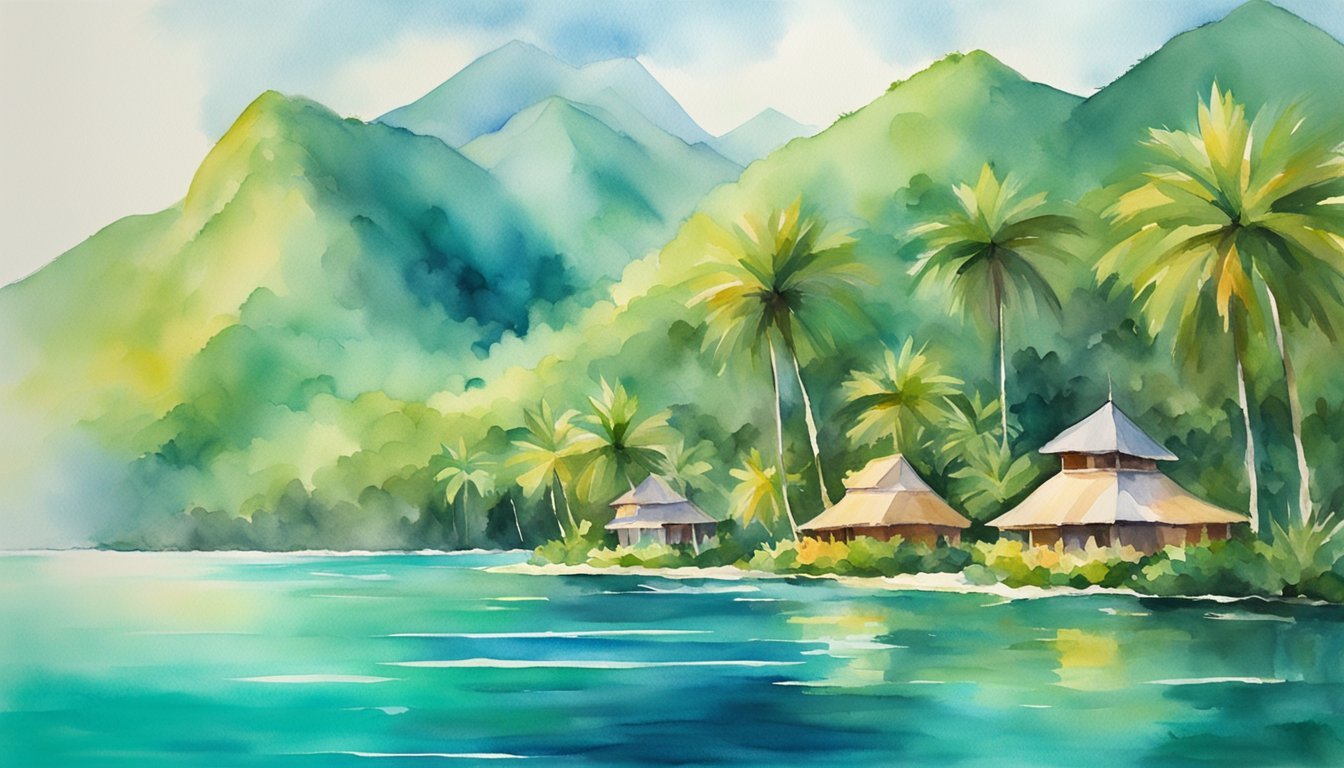Welcome to the Hawaiian Islands

Geographical Marvels
The Hawaiian Islands are an archipelago of 132 islands located over 2,000 miles west of California in the Pacific Ocean. They are the only state in the US that is entirely made up of islands. These islands are volcanic in nature, constantly reshaping their terrain and forming some of the most majestic landscapes on Earth.
Three well-known volcanoes can be found here: Mauna Kea, Mauna Loa, and Kilauea. Mauna Kea is the tallest, reaching an impressive 13,803 feet above sea level, while Mauna Loa and Kilauea are both active and part of the Hawaii Volcanoes National Park. The islands themselves boast stunning beaches and coastlines that have become iconic symbols of paradise.
Rich History and Culture
Hawaii’s rich history began with the arrival of Polynesians who inhabited the islands around 400 A.D. Over time, the islands formed a united kingdom, with a celebrated monarch, King Kamehameha, who became known for uniting the Hawaiian Islands in 1810. Hawaii’s history took a significant turn when it became the 50th state of the United States in 1959.
Today, Hawaiian culture is a vibrant blend of ancient Polynesian traditions and influences from North America and other parts of the world. It is well-known for its warm aloha spirit, beautiful hula dances, and unique language that adds to the charm of this idyllic destination.
Flora and Fauna
The isolation and unique geography of the Hawaiian Islands have led to the development of a diverse array of plant and animal species. Many of these species are endemic, meaning they are found nowhere else on Earth. The islands are home to:
- 132 islands: The main inhabited islands are the Big Island, Maui, Oahu, Kauai, Niihau, Molokai, Lanai, and Kahoolawe.
- Ocean: The islands are surrounded by the vast Pacific Ocean, providing a rich ecosystem of marine life, including coral reefs that support numerous fish species.
- Flora: Hawaii’s plant life ranges from lush tropical rainforests to arid desert landscapes, creating a beautiful and diverse array of vegetation, including many unique and rare species.
- Fauna: Hawaiian wildlife is equally as captivating, with species such as the endangered Hawaiian monk seal, green sea turtles, and the nēnē (Hawaii’s state bird), found exclusively on the islands.
Visiting the Hawaiian Islands is a truly remarkable experience, with breathtaking geographical marvels, a rich history and culture, and an incredible array of flora and fauna waiting to be explored.
Explore the Heart of Hawaii
Lifestyle and Traditions
Hawaii is well-known for its vibrant and diverse cultural history, as it was originally settled by Polynesians around 500 C.E. The official language of the state includes both English and Hawaiian, although Pidgin, a creole language, is also widely spoken.
The state’s monarchy played a significant role in shaping Hawaiian culture. Key historic figures include Queen Liliuokalani and King Kamehameha. One notable attraction is the Iolani Palace, the former royal residence in Honolulu.
‘Driven by the aloha spirit, locals and visitors alike appreciate the strong sense of love and mutual respect that permeates Hawaiian culture. Key elements of this culture include the legends of hula dancing and the iconic tradition of wearing leis.
Environmental Wonders and Challenges
Hawaii is home to awe-inspiring natural features, such as the active volcanoes found in Volcanoes National Park. Lava flows have created fertile soil that supports a productive agricultural industry, with coffee, macadamia nuts, pineapple, and sugarcane being major crops.
However, the state also faces environmental challenges. Invasive species, such as the hoary bat and rats, pose significant threats to native species and ecosystems. Native wildlife includes endangered species like the Hawaiian monk seal and various types of sharks.
Economy and Resources
A major driver of Hawaii’s economy is tourism, with millions of visitors each year attracted by its beautiful beaches, warm weather, and outdoor recreational activities like surfing.
In addition to tourism, agriculture plays an essential role in Hawaii’s economy. The fertile volcanic soil supports several crops, including coffee, macadamia nuts, pineapple, and sugarcane. Moreover, Hawaii’s unique climate and geographic isolation have made it an ideal location for research and development in fields like renewable energy, astronomy, and oceanography.
In conclusion, the Heart of Hawaii offers an engaging mix of captivating culture, stunning natural beauty, and abundant resources, making it a truly unique destination for both locals and visitors alike.

